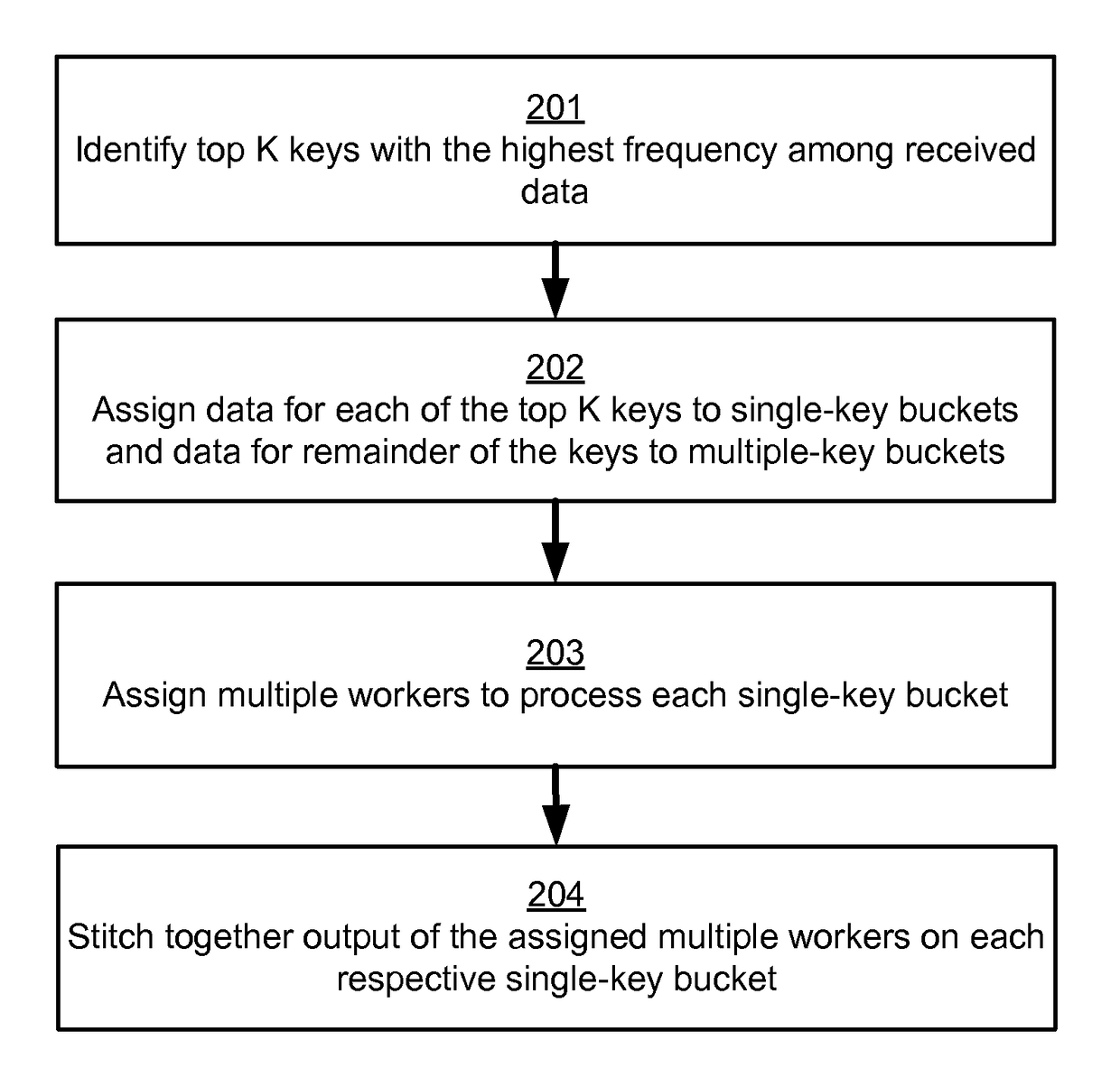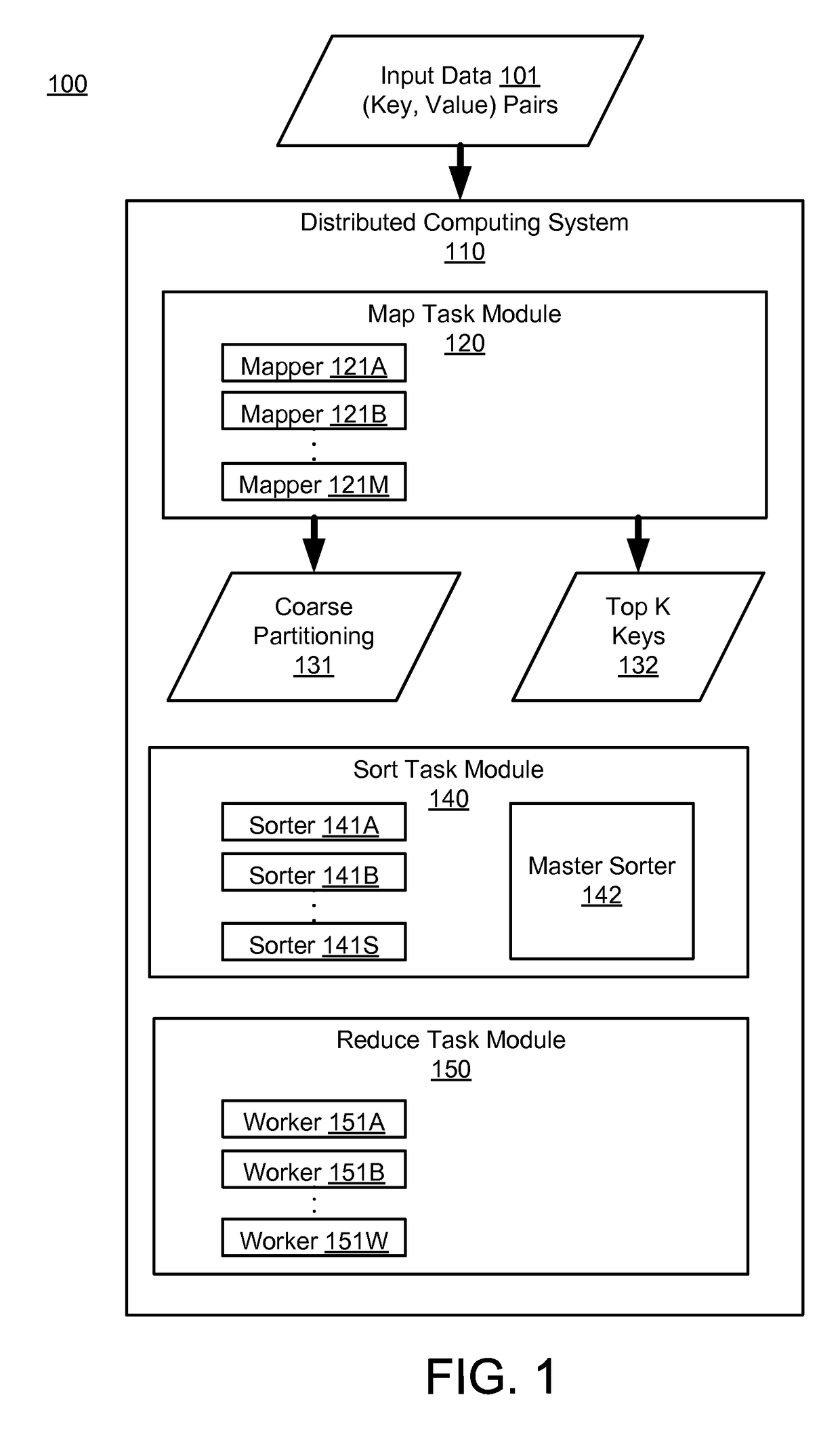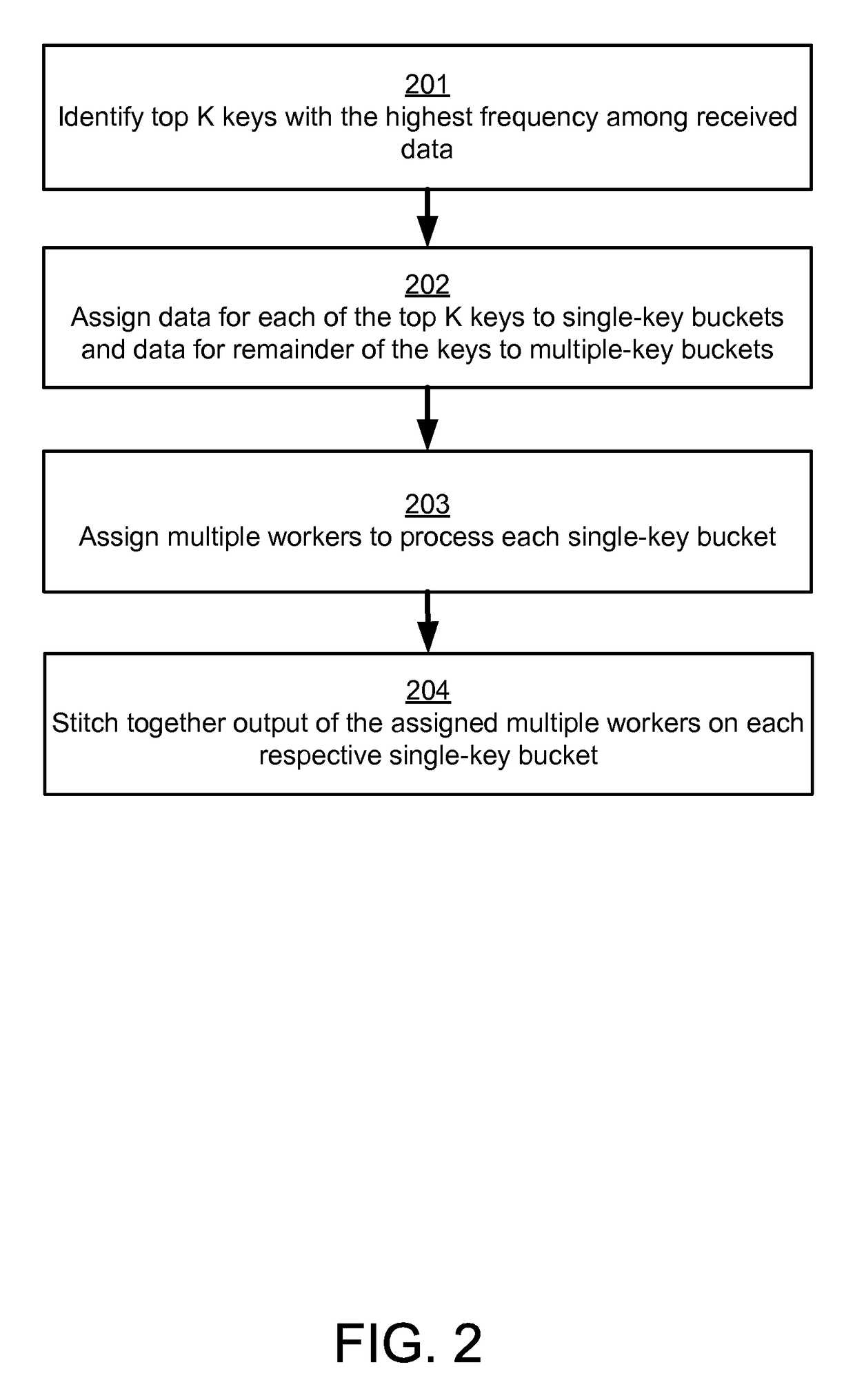Automated load-balancing of partitions in arbitrarily imbalanced distributed mapreduce computations
a distributed mapreduce and partition technology, applied in computing, database models, instruments, etc., can solve problems such as the fundamental data imbalance problem of conventional mapreduce implementations, the uneven distribution of hash functions among groups, and the processing of more items by processing units
- Summary
- Abstract
- Description
- Claims
- Application Information
AI Technical Summary
Benefits of technology
Problems solved by technology
Method used
Image
Examples
example method
[0027]FIG. 2 is a flow chart illustrating a method of load-balancing partitions in an arbitrarily imbalanced distributed MapReduce computation, in accordance with an embodiment of the invention. In other embodiments, additional or alternative steps may be performed.
[0028]In step 201, the top K keys with the highest frequency among the received data are identified. For example, the top 1,000 keys with the highest frequency in a dataset of 1,000,000 records are identified as the dataset is being processed by the map task module 120. Optionally, the distributed computing system 110 may report the frequency distribution of the top K data keys or all data keys to an administrator for informational purposes.
[0029]In step 202, data for each of the top K keys is assigned to a single-key bucket, and data for the remainder of the keys is assigned to multiple-key buckets. Thus, in the above example, the top 1,000 keys with the highest frequency are each assigned to a separate respective one of...
PUM
 Login to View More
Login to View More Abstract
Description
Claims
Application Information
 Login to View More
Login to View More - R&D
- Intellectual Property
- Life Sciences
- Materials
- Tech Scout
- Unparalleled Data Quality
- Higher Quality Content
- 60% Fewer Hallucinations
Browse by: Latest US Patents, China's latest patents, Technical Efficacy Thesaurus, Application Domain, Technology Topic, Popular Technical Reports.
© 2025 PatSnap. All rights reserved.Legal|Privacy policy|Modern Slavery Act Transparency Statement|Sitemap|About US| Contact US: help@patsnap.com



